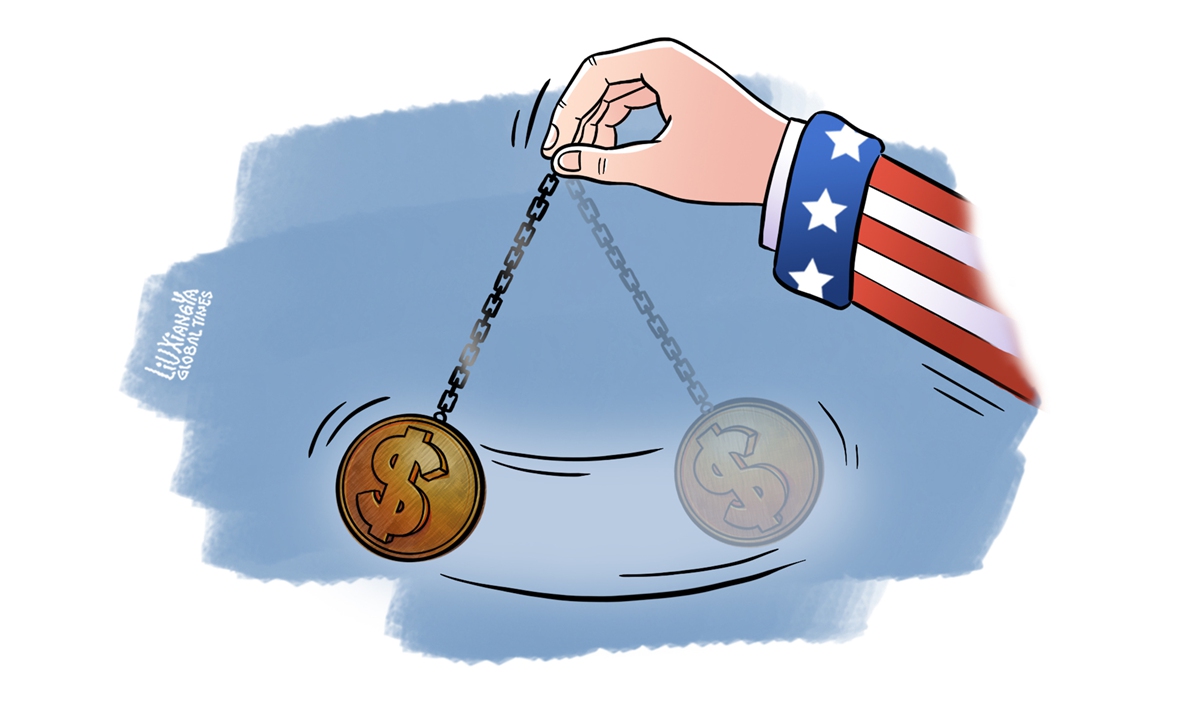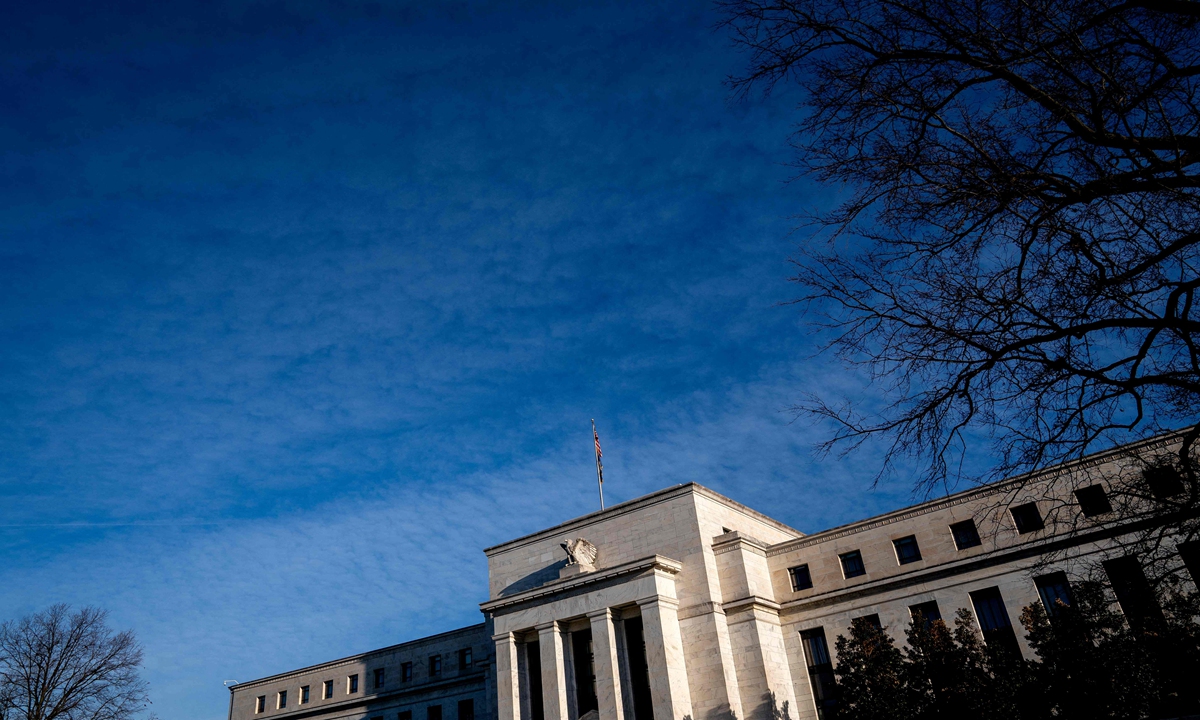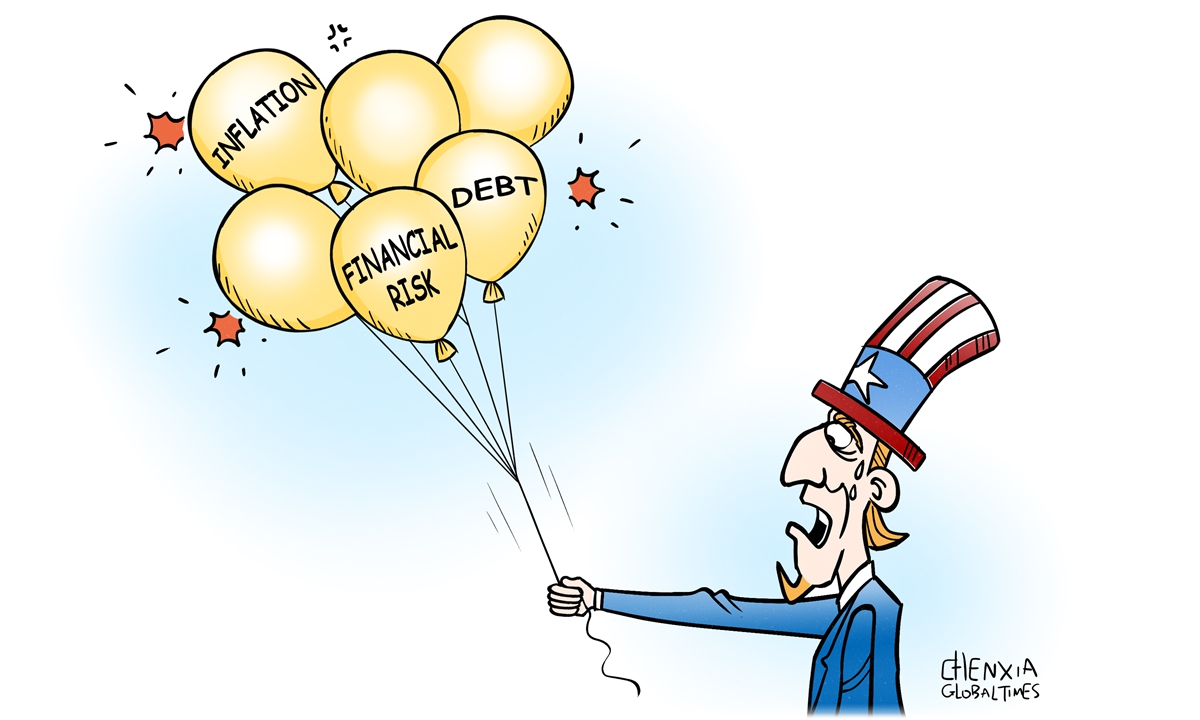
Illustration: Liu Xiangya/GT
The US Federal Reserve (Fed) on Wednesday released the minutes of the Federal Open Market Committee meeting that was held on September 17 and 18. As more details emerge, the growing policy uncertainties brought about by a change in US monetary policy is becoming increasingly unsettling.The meeting summary indicated that, in light of the progress on inflation and the balance of risks, the committee decided to lower the target range for the federal funds rate by 50 basis points (bps), but one member voted against that decision, preferring to lower the target range for the federal funds rate by 25 bps.
That doesn't happen too often. It was the first time a governor had dissented on an interest rate vote since 2005 for a Fed known for its unity on monetary policy, according to CNBC.
The divergence in opinions about how aggressive the Fed should be with its rate cuts was larger than originally thought. "Some participants observed that they would have preferred a 25-basis-point reduction of the target range at this meeting, and a few others indicated that they could have supported such a decision," the minutes said.
September's rate cut was the Fed's first since March 2020, but it won't be the last. How fast will the Fed cut rates after the first shot? Those are questions that investors want answers to. However, the unusually divisive moment at the Fed, which shows there are heated debates between hawks and doves within the central bank at the outset of a rate-cut cycle, send a clear signal that the uncertainty and unpredictability of US monetary policy is on the rise.
Previously, some US research institutions predicted that, given that some economic indicators were better than market expectations, they may prompt the Fed to remain cautious in further adjusting its interest rate policy. However, future economic and employment fluctuations, even if small, may change this forecast and cause market volatility.
Faced with multiple policy objectives, the Fed is likely to continue struggling between cutting rates quickly and not rushing to make rapid rate cuts.
As the world's largest economy, the US interest rate cut will have an impact on many areas such as global financial markets, trade and capital flows.
Uncertainty about US monetary policy may generate a spillover effect, leading to volatility in the global financial markets. In this process, the rest of the world needs to be alert to any spillover of financial risks from market volatility.
The impact of the Fed's rate cuts on emerging markets is likely to be more pronounced than on developed markets. A rate cut could reinforce expectations of the depreciation of the US dollar, spurring hot money flows that push up financial asset prices in emerging economies.
If there are any black swan events in the world, or the pace of Fed rate cuts slows beyond expectations, hot money may withdraw from emerging markets, leading to some volatility in their financial markets. Therefore, while emerging markets are taking advantage of the opportunities brought about by the Fed's rate cuts, they should also be wary of short-term flows of speculative capital.
As for China, although US rate cuts may bring complexities and risky fluctuations to global financial markets and capital flows, China has enough tools to stabilize its financial market and secure financial stability. In recent decades, China has maintained a stable financial system in a complex international environment. This has proved China's financial governance capability.
With continuous efforts in strengthening risk management and promoting financial innovation, China's financial market has the ability and conditions to adapt to changes in global financial markets, and find its own certainty in a global economy full of uncertainties.
The author is a reporter with the Global Times. bizopinion@globaltimes.com.cn



